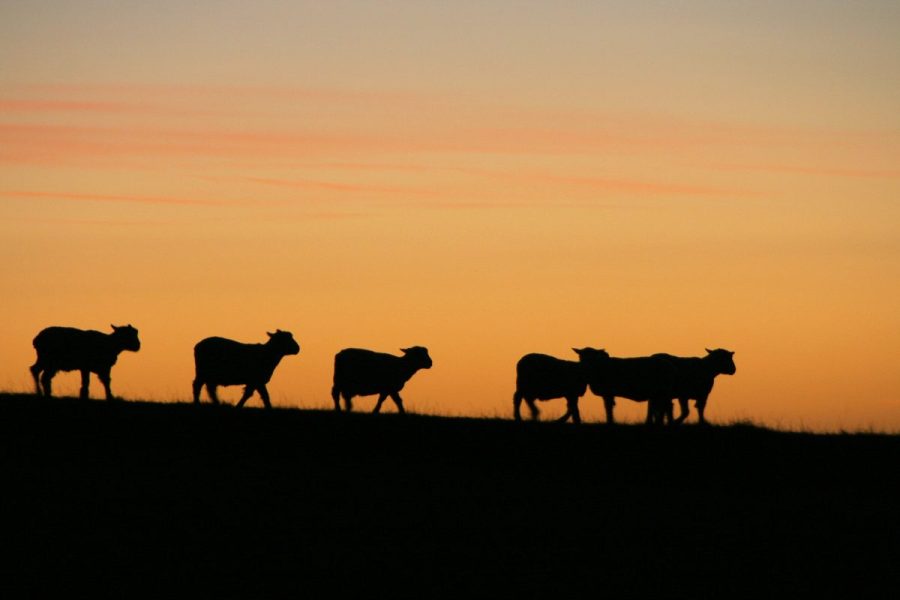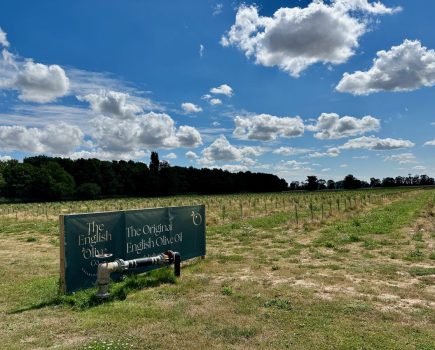As pressures mount on arable businesses to improve resilience, reduce costs and integrate environmental outcomes, mixed farming systems are seeing renewed interest. CPM speaks to one Staffordshire farmer balancing beef and combinable crops in a technically integrated system designed to strengthen margins, enhance soil health and deliver environmental services.
“It’s not about maximising one thing in isolation it’s about how everything links together.” ROB ATKIN
By Charlotte Cunningham
In the years after the Second World War, British agriculture was pushed towards specialisation. Arable farms became larger, more focused on combinables, and livestock often disappeared from rotations. Although efficiency improved, many farms lost the benefits that integration had once provided – nutrient cycling, soil fertility, labour continuity and resilience.
Today, with fertiliser and feed costs volatile, grain prices fluctuating, and the Sustainable Farming Incentive among the schemes rewarding practices that enhance soils and biodiversity, the pendulum is swinging back. Mixed farming is being rediscovered as a tool not just for tradition’s sake, but for margin protection and future-proofing.
That’s how Staffordshire grower Rob Atkin views it. Farm manager of 485ha at Field Hall Farm in Uttoxeter, he’s built a system where crops and cattle are inseparable – each designed to support the other.
“It’s not about maximising one thing in isolation,” he says. “It’s about how everything links together. Crops feed cattle, cattle provide muck for the crops, sheep graze stubbles and add fertility. It’s a cycle that makes sense, especially now.”
BALANCING ACT
At the core of Field Hall is a rotation that serves both the market and the livestock. Roughly 385ha are cropped, with the balance in grassland and margins. The rotation includes wheat, barley, oats, oilseed rape, beans and maize.
“Feed wheat goes to local mills in Cheshire and Shropshire,” explains Rob. “OSR heads north to Manchester or to Moy Park at Ashbourne for chicken rations. Barley – about 32ha of winter barley – is all for our cattle.
“Spring barley is usually around 80ha with 50% sold through Openfield, while the other half is kept for feed; oats follow the same pattern. The beans are one of our main protein sources, although we’ve cut back a bit in favour of maize which we reintroduced recently.”
That flexibility matters, he points out. Beans are high in protein but variable in yield while maize provides reliable energy and fits well in the cattle ration. By adjusting crop areas annually, Rob keeps the ration balanced while also spreading arable risk.
“Technically, the only thing we’re buying in to feed the cattle is a manufactured blend for calves,” he says. “Everything else – protein, straw, cereals – is homegrown.”
That choice isn’t just a financial decision – by feeding his own crops, Rob creates a market for them regardless of world prices. And in return, the cattle generate manure that replaces a significant share of synthetic fertiliser.
Delving deeper into the arable enterprise and wheat is the backbone of the rotation. Yields average 8-9t/ha, realistic for the farm’s medium loam soils, notes Rob. Fertiliser is applied accordingly: 200kgN/ha on first wheats, 185-190kgN/ha on seconds, with sulphur included based on tissue test results. “There’s no point pushing more N – the land won’t return it,” he adds.
Variety selection is shaped by agronomy as much as market demand. “My top three asks are disease scores, yield, and spring and autumn vigour,” he explains. “That’s why we’re growing Beowulf, Rebellion, Oxford and Bamford. They’re clean and competitive, which helps us to keep fungicide and herbicide costs sensible.”
OSR retains a place, although only after early-harvested barley, highlights Rob. “It all comes down to the drilling window. We’ll subsoil deeper ahead of OSR to relieve compaction and give rooting depth.”
Spring barley remains a key lever in the rotation, both for spreading workload and as a blackgrass suppression tool. “We can follow barley with stubble turnips for sheep, then go into maize or spring wheat. It keeps soils active and gives us flexibility.”
Looking at how these crops are established, and the system has evolved over time to tie in with Rob’s desire to move to a more sustainable system which has less impact on the farm’s soils. “In a normal year we’d be min-till,” he explains. “Shallow discs after the combine, straw removed, then low-disturbance subsoiling where required. We’ll let it green up and spray off before drilling.”
But the past two wet autumns forced a shift. “We’ve had to plough and combi-drill. It’s not my preference, but it’s the only way we could get crops established.”
Uneven tramlines also mean some fields require pressing before drilling. “Where land is level we can go straight in, but where it’s ridged or compacted, we’ll run a press first.”
WEED MANAGEMENT
Weed-wise, blackgrass is the dominant challenge. “Our biggest spend is herbicides,” admits Rob. “We’ll stack pre-ems – flufenacet, diflufenican, sometimes prosulfocarb – and support the programme with cultural controls. We drill slightly earlier at higher seed rates to smother it. If we drill too late, we end up with thin crops and weeds taking over.”
Fungicide spend is managed carefully. “Normally we’ll apply at T1 and T2, sometimes with a T0 or T1.5. This year we put on a low rate of tebuconazole early for yellow rust after the YR15 breakdown. I try to make the T2 or T2.5 carry the weight, covering both flag leaf and ear.”
The livestock side brings the rotation full circle. Rob buys in both calves (4-6 weeks old) and weanlings (4-6 months old), aiming to finish around 100 cattle a year. In winter, sheds hold 330-350 head of cattle kept on straw beds. Finished cattle leave the farm between 20-24 months, targeting consistent supply rather than chasing maximum growth rates.
Rations are formulated with a strong emphasis on homegrown cereals and forages. A typical winter TMR includes maize silage, grass silage, rolled barley, homegrown beans, plus a Dugdale starter blend for calves up to three months old.
“We’re aiming for 1.2-1.4kg liveweight gain per day,” explains Rob. “Maize has been a game-changer because it stabilises the ration. When grass growth stops, performance would drop away – but maize keeps energy levels up.”
By keeping rations largely homegrown, Rob shields the business from volatile feed markets. In a year when soymeal or purchased proteins spike in price, his system still ticks over.
Financially, the cattle provide a safety net too. “When prices aren’t attractive on the grain market, we can get more return by selling the barley through cattle. Barley might be £130/t, while beef is still £6.40/kg. Walking it off the farm on four legs often makes more sense.”
And the benefits flow back to the arable land. FYM from the cattle sheds supplies valuable nutrients, and across the rotation, that offsets significant bought-in fertiliser and builds soil organic matter.
“It helps with P and K values and puts organic matter back in. We can trim fertiliser bills and improve structure at the same time,” says Rob. “It’s one of the biggest advantages of keeping livestock.”
Sheep provide another link in the chain as each winter Rob’s father-in-law brings around 500 store lambs onto the farm to graze stubble turnips.
Turnips are established after winter barley on ground destined for spring cropping, he explains. “We’ll drill them in late July or August, graze through the winter, then go into maize or spring barley the following April. It keeps the ground covered, generates an income from the sheep, and we’re getting a payment from the water company because soils aren’t left bare.”
The grazing itself delivers benefits too. “Sheep recycle nutrients directly back into the field, trampling cover into the soil and contributing organic matter. Soil surface compaction is managed by adjusting stocking density and moving grazing blocks regularly, ensuring spring crops can be drilled straight in.”
INCOME STREAMS
Financially, the system is comparable to growing a wheat crop, once lamb rent and scheme payments are factored in. “By the time you stack the rent from the stubble turnips and the water company payment, it makes up for the shortfall you’d get compared with winter wheat. And, the soil is in better shape for the spring crop that follows.”
Alongside cropping and livestock, Field Hall is structured to deliver environmental outcomes, with payments where possible.
Grassland is now managed under a low-input SFI option, reducing fertiliser spend while still supporting the beef herd. Herbal leys with diverse rooting depths improve soil infiltration and provide resilient grazing in dry spells. Then, cover crops are chosen for rooting depth and nutrient capture – often a mix of radish, vetch and cereals – to prevent leaching and build soil organic matter.
Structural measures are also in place, with 6m margins to buffer field edges, contour cropping to reduce runoff on slopes, and bunds used to slow water and trap sediment before it leaves fields. “These things aren’t just ticking boxes,” suggests Rob. “They give us payments but also mean healthier soils, less erosion and better infiltration. It all feeds back.”
Exporting straw – around 60% of production – complements this by reducing slug pressure and removing grassweed seed from the system. “We sell to local dairies and keep the rest for bedding,” says Rob. “It helps to break pest and weed cycles.”
The mixed farming approach also underpins labour management. “We have three lads here, one of them a student; cattle give them work in winter so they’re not going off elsewhere. It means I have a regular workforce who know the system, rather than retraining every year,” says Rob.
That continuity pays off at busy times. A trained team familiar with both arable and livestock tasks can be redeployed seasonally – drilling in autumn, calving and feeding in winter, silage and spraying in summer. “It makes us more flexible and efficient.”
Having the cattle mean all the farm infrastructure is used efficiently too, he believes. “Older sheds not suited for grain storage or conversion to industrial units are instead used for cattle housing. They’re dry, warm and ventilated, which is all we require.”
For anyone considering moving to a mixed farming approach, Rob’s advice is to start by taking stock of what you have – no pun intended… “If you have grassland, sheds, straw, and staff with winter capacity, livestock could make sense. But it’s not for everyone.
“You have to think about your market, your transport, your costs. The main thing is making sure each enterprise complements the others, rather than competing.”
At Field Hall, nothing stands alone. Grain feeds cattle; cattle produce muck; muck feeds crops; sheep graze turnips; turnips cover the soil; and each link strengthens the next.
“There are a lot of little scenarios that make the system add up,” reflects Rob. “When grain prices are poor, beef can carry us. When beef margins are tight, arable sales keep cashflow moving. We have resilience, soil health benefits, and staff continuity. That’s the advantage.”
In an era where farmers are being asked to produce food, improve soils and protect biodiversity all at once, Rob proves that mixed farming isn’t about looking back. It’s about closing the loop – and securing the future.
This article was taken from the latest issue of CPM. Read the article in full here.
For more articles like this, subscribe here.
Sign up for Crop Production Magazine’s FREE e-newsletter here.




